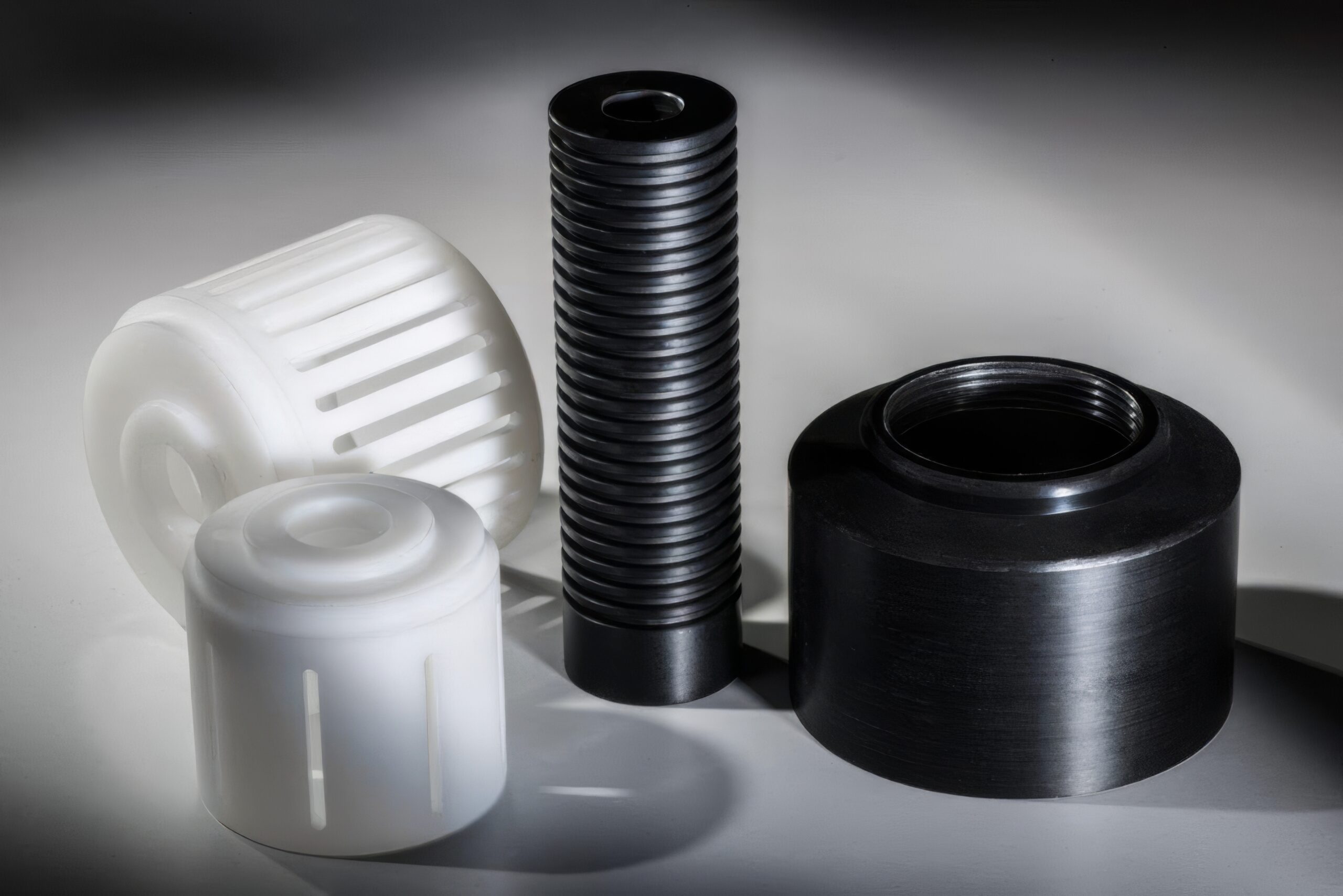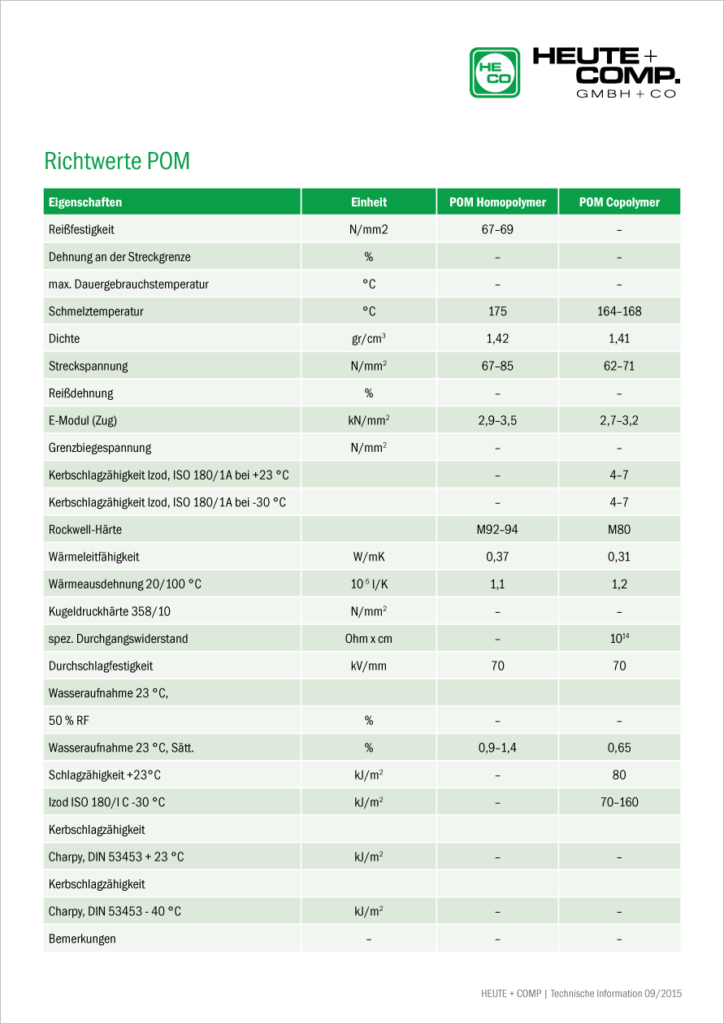Polyoxymethylene (POM), also known as acetal, is a high-performance engineering plastic characterised by its outstanding mechanical properties, such as excellent rigidity and hardness. These characteristics make POM a favoured material in the manufacturing industry, especially for precision parts that require high dimensionality and stability.
Another notable feature of POM is its exceptionally low water absorption, which makes it ideal for use in humid environments without significant degradation of mechanical properties or dimensional stability. This property is particularly advantageous in applications where the long-term stability and reliability of components are critical.
In addition, POM has good sliding properties, making it an ideal material for moving parts in mechanisms and devices. These sliding properties, combined with low moisture absorption, help to minimise friction and wear over the life of the product, reducing maintenance costs and downtime.
POM is also used in electrical and dielectric components due to its good insulating properties. It can be used in a variety of electrical and electronic applications, from insulators to precision parts in electronic devices.
The excellent machinability of POM is another key advantage that enables the production of complex parts with high surface qualities and tight tolerances. This leads to improved dimensional stability and surface quality, which is essential for many technical applications. The ability to maintain tight tolerances and ensure consistent quality in mass production makes POM a favoured material for engineers and designers.
To summarise, POM offers a combination of outstanding mechanical strength, hardness, low water absorption, good sliding and insulating properties and excellent machinability. These properties make it a versatile material that is used in a wide range of industries and applications, from automotive to electronics to mechanical engineering and beyond.

